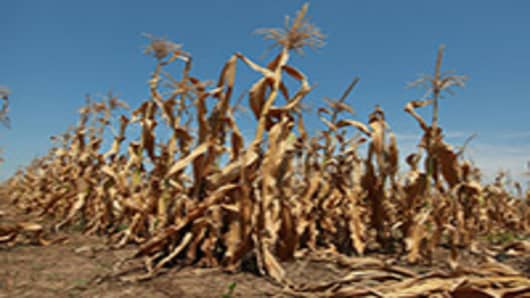The U.S. corn crop continues to shrink, and that is likely to continue driving corn prices to new highs.
The latest U.S. Department of Agriculture data, released Monday afternoon, showed that now just 24 percent of the corn crop in 18 key states is in good to excellent condition, and 48 percent is now in poor or worse shape as the drought and heat persists in the corn belt.
That is more bad news for livestock producers, who have been hurt by the rapid rise in corn prices, up more than 28 percent in July and about 50 percent since early June.
On Monday, livestock and poultry producers asked the government to reduce or cancel the use of corn-based ethanol in gasoline for a year. The USDA expects ethanol use about 40 percent of the corn crop, and livestock about the same, though farmers have been culling their herds because of the high cost of feed.
December corn futures Monday ended at a record $8.14 per bushel, and rose to $8.20 per bushel in early electronic trading Tuesday, before moving lower on profit-taking.



